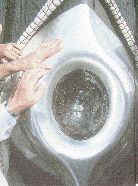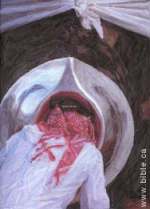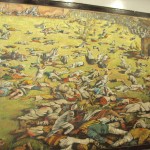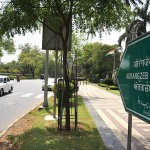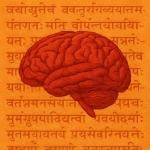There are many religious beliefs that either we do not go into detail or we just take what is told to us blindly. Here is an interesting account of how the pre-Islamic idols and symbols as well words formed the basis of some of the most important symbols within Islam itself. Some of them have been cleverly disguised but their origin seems pretty clear..
But before we go to the interpretation – lets go to the Wikipedia version:
Many Muslims regard the Stone as ‘just a stone’. When Umar ibn al-Khattab, the second Caliph, came to kiss the Stone, he said, in front of all assembled: “No doubt, I know that you are a stone and can neither harm anyone nor benefit anyone. Had I not seen Allah’s Messenger kissing you, I would not have kissed you.“[2] Many Muslims follow Umar: they pay their respects to the Black Stone in a spirit of trust in Muhammad, not with any belief in the Black Stone itself.
Some say that the Stone is best considered as a marker, useful in keeping count of the ritual circumambulations (tawaf) one has performed.[3]
Other Muslims are more willing to believe that the Stone itself has some supernatural powers. They believe that it fell from the sky during the time of Adam and Eve, and that it has the power to cleanse worshippers of their sins by absorbing them into itself. They say that the Black Stone was once a pure and dazzling white; it has turned black because of the sins it has absorbed over the years.[1]
Still others believe that the Stone can only erase the believer’s minor sins. On the Day of Judgement, the Stone will testify before God (Allah) in favor of those who kissed it.[citation needed]
The Stone was an object of veneration in pre-Islamic days. Early chroniclers say that the Kaaba was rebuilt during Muhammad’s youth, and that there was some contention among the Quraysh, Mecca’s ruling clan, as to who should have the honor of raising the Black Stone to its place in the new structure. Muhammad is said to have suggested that the Stone be placed on a cloak and that the various clan heads jointly lift the cloak and put the Stone into place.[4] Secular historians see this tale as a later glorification of Muhammad, but agree that it accurately represents the pre-Islamic status of the Black Stone.
So is it a “divine” stone or something else? Scientists say it is most probably a part of the meteorite but the Muslims would not let the Non-Muslims see it nor be taken out and tested
Just as there are various viewpoints regarding the religious significance of the Stone, there are also various opinions as to it’s history and nature.
Muslims say that the Stone was found by Abraham (Ibrahim) and his son Ishmael (Ismail) when they were searching for stones with which to build the Kaaba. They recognized its worth and made it one of the building’s cornerstones.
Secular historians point to the history of meteorite worship, in pre-Islamic Arabia, and say it is likely that the Stone is a meteorite or possibly impact glass, from the meteorite impact crater at Wabar, about 1100 km from Mecca.[5]. There is no way to test this hypothesis without removing and examining the Stone, which would not be permitted by its guardians.
Now here is the interpretation of this black stone and the other symbols/words in Islam:
Perhaps the best-known Black Stone, and now by far the most revered, is the Ka’bah at Mecca. Ka’bah means ‘cube’ and this describes the shape of the black stone structure on a marble base which stands in the centre court of the Great Mosque, Masjidul Haram, at the centre of Mecca. It stands about 50 feet high by about 35 feet wide. Set into the eastern corner is the sacred stone, covered by an elaborately embroidered black drape. As any non-moslem in the temple would be slain on sight, and photography is generally prohibited, this stone is shrouded is mystery. However, Rufus Camphausen has succeeded in tracking down three accounts of the pilgrimage to Mecca, two of which do contain photographs [1-3]. What these reveal is a polished black stone of which less than two feet is visible, set in a large, solid silver mount. The whole resembles – quite deliberately, for reasons which will emerge – the vulva of the goddess. That moslems now refer to it as the Hand of Allah does not diminish the urge for all those who complete the pilgrimage to Mecca to touch or kiss this sacred object.
The Black Stone has long since been broken and the silver band holds together the fragments. Tradition holds that it was a meteorite and the stone was white in colour when it first landed and then blackened. The faithful attribute this change in colour to the belief that the stone absorbs the sins of the pilgrims, but it is consistent with known meteorites which are white at first but oxidise over a period of time.
‘A principal sacred object in Arabian religion was the stone. . . . Such stones were thought to be the residence of a god hence the term applied to them by Byzantine Christian writers of the fifth and sixth centuries: ‘baetyl’, from bet’el, ‘the house of god’.’ [4]
‘In north Arabian temples the image of the deity sometimes stood in the open air or could be sheltered in a qubbah, a vaulted niche. . . . Not to be confused with the qubbah is the word ka’bah, for a cube-shaped walled structure which . . . served as a shelter for the sacred stones.’ [5]
Camphausen, in his article [6], reveals that the misogynic moslem religion has its origins in goddess worship. Allah is a revamped version of the ancient goddess Al’Lat, and it was her shrine which has continued – little changed – as the Ka’bah. The known history of Mohammed reveals that he was born around 570 CE into a tribe of the Quraysh, who not only worshipped the goddess Q’re but were the sworn guardians of her shrine. By 622 Mohammed was preaching the ways of his god, Allah, and was driven out by his own tribe as a result.
The triple goddess
Pre-islamic worship of the goddess seems to be primarily associated with Al’Lat, which simply means ‘goddess’. She is a triple goddess, similar to the Greek lunar deity Kore/Demeter/Hecate. Each aspect of this trinity corresponds to a phase of the moon. In the same way Al’Lat has three names known to the initiate: Q’re, the crescent moon or the maiden; Al’Uzza, literally ‘the strong one’ who is the full moon and the mother aspect; then Al’Menat, the waning but wise goddess of fate, prophecy and divination. Islamic tradition continue to recognise these three but labels them ‘daughters of Allah’.
According to Edward Rice [7] Al’Uzza was especially worshipped at the Ka’bah where she was served by seven priestesses. Her worshippers circled the holy stone seven times – once for each of the ancient seven planets – and did so in total nudity. Near the Ka’bah is the ever-flowing well, Zamzam, which cools the throats of the countless millions of pilgrims.
In an oasis of always-flowing water, the Black Stone in its mount became an unmatched image of the goddess as giver of life. Only in the Indian continent do such physical symbols for the male and female generative powers – the lingam and yoni – continue to be worshipped with their original fervour.
It is easy to imagine that in pre-moslem times the goddess’s temple at Mecca was pre-eminent – whether to celebrate life, ask protection, pray for offspring. Legend tells how Abraham, unable to produce children by his wife Sarah, came here to make love to his slave Hagar. Later, when Hagar came back to give birth, she could find no water and Abraham created the holy well of Zamzam to save the life of his first son.
When Mohammed wanted to surplant Al’Lut with Allah, this was the one Temple he must conquer. Although Mohammed did conquer the Ka’bah, little else changed. The faithful still circle the Holy of Holies seven times (although, I hasten to add, now fully clothed). The priests of the sacred shrine are still known as Beni Shaybah or ‘Sons of the Old Woman’ – Shaybah being, of course, the famous Queen Sheeba of Solomon’s times.
Sheeba appears under the guise of Lilith in the Near East and as Hagar (‘the Egyptian’) in the Hebrew mythology of the Old Testament. So, rewriting the legend given above, Abraham begot his son, Ishmael – the ancestor of all Arab peoples – by the goddess on the Black Stone of the Ka’bah.
While we are tracing names, Q’re (or Qure), the maiden aspect of Al’Lut, seems certain to be the origin of the Greek Kore. Camphausen suggests that the holy Koran (qur’an in Arabic) is the ‘Word of Qure’. Even moslems admit that the work existed before the time of Mohammed. Legend said it was copied form a divine prototype that appeared in heaven at the beginning of time, or the Mother of the Book [8]. Al’Uzza, the mother aspect of Al’Lut, may give us the pre-dynastic Egyptian snake goddess Ua Zit, who develops into Isis.
Archaeo-astronomy<
Returning to the geomantic significance of the Ka’bah, Professor Hawkins has argued that it is exceedingly accurately aligned on two heavenly phenomena. These are the cycles of the moon and the rising of Canopus, the brightest star after Sirius. In a thirteenth-century Arabic manuscript by Mohammed ibn Abi Bakr Al Farisi it is stated that the alignment is set up for the setting crescent moon – an ancient symbol of the virgin-goddess which still appears in the national flags of many islamic nations. In some flags – Algeria, Mauritania, Tunisia and Turkey – the crescent is accompanied by a star, perhaps representing Canopus.
The Egyptian city known as Canopus seems also have been a goddess temple, as the Greek historian Strabo (63BCE-21CE) considered the place to be notorious for wild sexual activities. Such references typically refer to temples where sacred ‘prostitution’ or ritual promiscuity were part of the worship; invariably sacred objects depicting the genitals of either god and/or goddess were venerated. Such sacred promiscuity continued to be part of the Pilgrimage to Mecca, at least for some moslems. The Shi’ites from Persia were allowed to form temporary ‘marriages’ for the period of the pilgrimage. Any children born as a result were regarded as divine or as saints – a custom with worldwide parallels (English surnames such as Goodman, Jackson or Robinson perhaps derive from similar sacred unions with god in the form of Green Men characters such as Jack o’the Green or Robin Greenwood; I would also suggest that the original sense of ‘godparent’ and ‘godchild’ has similar origins.)
Aniconic black stone once venerated at the Temple of Aphrodite, near Paphos, Cyprus. From photograph by Bob Trubshaw.

